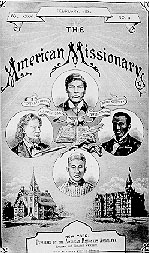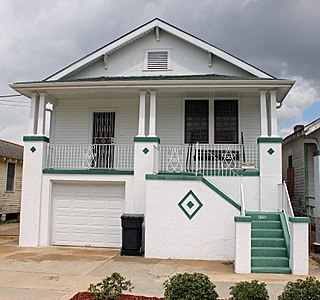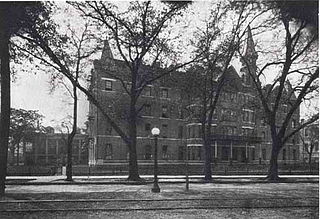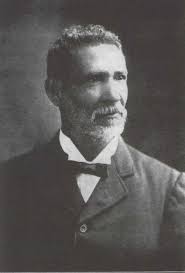History
Responding to the post-Civil War need to educate newly freed African Americans in New Orleans, Louisiana and the surrounding region, the American Missionary Association of the Congregational Church founded Straight University on June 12, 1868.
Straight University received its name as recognition for Seymour Straight's initial endowment gift. Straight was a wealthy cheese manufacturer from Hudson, Ohio. In 1915, the name "Straight University" was changed to Straight College, which more accurately represented the scope of the school's curriculum and program. Missionary work was a core concern, which extended from New Orleans to Africa.
It was a college that admitted students regardless of their backgrounds, advertising in 1871:
The old and young can enter at this Institution any day, no distinction made in regard to race or color. The design of the Institution, is to furnish opportunities to those wishing a rapid, thorough and practical business education [...]. Parties having ordinary ability, who have entirely neglected their education now have the opportunity to qualify themselves for almost any position in the State, in an incredible short time. From two to three months is all that requires to complete the commeral [sic] course. Terms duced to suit the times [sic]. [1]
Throughout its history, Straight offered courses of study ranging from elementary- to college-level courses in music and theology. In 1934, after struggling with financial difficulties during the Great Depression, Straight College was merged with New Orleans University to form Dillard University.
Law department
Straight University also offered professional training, including a law department from 1874 to 1886. Its graduates participated in local and national Reconstruction and post-Reconstruction era civil rights struggles. For example, Louis André Martinet, an 1876 graduate of Straight University Law School, published The Crusader—a civil rights daily; co-founded the Comité des Citoyens (Citizens' Committee) in New Orleans, which worked for civil rights; and played a significant role in setting up the challenge to segregation of Plessy v. Ferguson , a landmark Supreme Court case. [2] His classmate Dan Desdunes joined him in this effort before moving to North Omaha, Nebraska to become a notable band leader.
The Law department is historically notable as an integrated institution where blacks and whites were trained side by side. "It is an interesting fact of our 50 law graduates, 35 have been white." [3] The school struggled to provide its law students with a proper research library. The students typically met for classes in the law professors' offices. [3]
In 1886, Straight discontinued the Law Department. It began to focus primarily on liberal arts, industrial arts, and teacher training.

Pinckney Benton Stewart Pinchback was an American publisher, politician, and Union Army officer. Pinchback was the first African American governor of a U.S. state and the second lieutenant governor. A Republican, Pinchback served as acting governor of Louisiana for 35 days from December 9, 1872 to January 13, 1873, during which ten acts of Legislature became law. He was one of the most prominent African-American officeholders during the Reconstruction Era.

Dillard University is a private, historically black university in New Orleans, Louisiana. Founded in 1930 and incorporating earlier institutions founded as early as 1869 after the American Civil War, it is affiliated with the United Church of Christ and the United Methodist Church.

Carl Edmond Stewart is a United States circuit judge of the United States Court of Appeals for the Fifth Circuit. He was appointed by Bill Clinton in 1994, and previously sat as a judge of the Louisiana Circuit Courts of Appeal from 1985 to 1994.

The American Missionary Association (AMA) was a Protestant-based abolitionist group founded on September 3, 1846 in Albany, New York. The main purpose of the organization was abolition of slavery, education of African Americans, promotion of racial equality, and spreading Christian values. Its members and leaders were of both races; The Association was chiefly sponsored by the Congregationalist churches in New England. The main goals were to abolish slavery, provide education to African Americans, and promote racial equality for free Blacks. The AMA played a significant role in several key historical events and movements, including the Civil War, Reconstruction, and the Civil Rights Movement.

Alexander Pierre "A. P." Tureaud Sr. was an African-American attorney who headed the legal team for the New Orleans chapter of the NAACP during the Civil Rights Movement. With the assistance of Thurgood Marshall and Robert Carter from the NAACP Legal Defense and Educational Fund, A. P. Tureaud filed the lawsuit that successfully ended the system of Jim Crow segregation in New Orleans. That case paved the way for integrating the first two elementary schools in the Deep South.
Theodore Kenneth (T.K.) Lawless was an American dermatologist, medical researcher, and philanthropist. He was a skin specialist, and is known for work related to leprosy and syphilis.
James W. Ames was an American physician.
Lawrence Dunbar Reddick was an African-American historian and professor who wrote the first biography of Martin Luther King Jr., strengthened major archives of African-American history resources at Atlanta University Center and the New York Public Library, and was fired by Alabama's state board of education for his support for student sit-ins at Alabama State College—an event that earned him honor for his courage and brought Alabama State College censure by the American Association of University Professors.

Gwendolyn Midlo Hall was an American historian who focused on the history of slavery in the Caribbean, Latin America, Louisiana, Africa, and the African Diaspora in the Americas. Discovering extensive French and Spanish colonial documents related to the slave trade in Louisiana, she wrote Africans in Colonial Louisiana: The Development of Afro-Creole Culture in the Eighteenth Century (1992), studied the ethnic origins of enslaved Africans brought to Louisiana, as well as the process of creolization, which created new cultures. She changed the way in which several related disciplines are researched and taught, adding to scholarly understanding of the diverse origins of cultures throughout the Americas.

New Orleans University was a historically black college that operated between 1869 and 1935 in New Orleans, Louisiana, United States. It was founded by Freedmen's Aid Society and the Methodist Episcopal Church. It merged with Straight College in 1935 to form Dillard University.

The Amistad Research Center (ARC) is an independent archives and manuscripts repository in the United States that specializes in the history of African Americans and ethnic minorities. It is one of the first institutions of its kind in the United States to collect African American ethnic historical records and to document the modern Civil Rights Movement.
David J. Dennis is a civil rights activist whose involvement began in the early 1960s. Dennis grew up in the segregated area of Omega, Louisiana. He worked as co-director of the Council of Federated Organizations (COFO), as director of Mississippi's Congress of Racial Equality (CORE), and as one of the organizers of the Mississippi Freedom Summer of 1964. Dennis worked closely with both Bob Moses and Medgar Evers as well as with members of SNCC, the Student Nonviolent Coordinating Committee. His first involvement in the Civil Rights Movement was at a Woolworth sit-in organized by CORE and he went on to become a Freedom Rider in 1961. Since 1989, Dennis has put his activism toward the Algebra Project, a nonprofit organization run by Bob Moses that aims to improve mathematics education for minority children. Dennis also speaks publicly about his experiences in the movement through an organization called Dave Dennis Connections.

Flint-Goodridge Hospital was a hospital in New Orleans, Louisiana. For almost a century (1896–1983) it served predominantly African-American patients and was the first black hospital in the South. For most of these years, was owned and operated by Dillard University, a historically black university. From 1932 until its closing in 1983 it was located on Louisiana Avenue in uptown New Orleans. Its former Louisiana Avenue facility is now listed in the US National Register of Historic Places.

Rodolphe Lucien Desdunes was a Louisiana Creole civil rights activist, poet, historian, journalist, and customs officer primarily active in New Orleans, Louisiana.
Albert Walter Dent was an academic administrator who served initially as business administrator of Flint-Goodridge Hospital and later as president of Dillard University (1941–1969), a predominantly black liberal arts college in New Orleans, Louisiana. In these roles, he was a community leader who improved education and health care for African-Americans and impoverished people in the American South.

Edgar Bloom Stern Sr. (1886–1959) was an American leader in civic, racial, business and governmental affairs for the city of New Orleans, Louisiana. He was successful at an early age in the cotton business in New Orleans, later diversifying into other businesses. Stern was an organizer of Dillard University, Flint Goodridge Hospital, and the Bureau for Governmental Research. Stern's family home, Longue Vue House and Gardens, is now a museum open to the public.
The Comité des Citoyens was a civil rights group made up of African Americans, whites, and Creoles. It is most well known for its involvement in Plessy v. Ferguson. The Citizens' Committee was opposed to racial segregation and was responsible for multiple demonstrations in which African Americans rode on the "white" cars of trains.
Louis André Martinet was a lawyer, publisher, medical doctor, civil rights activist and state legislator in Louisiana during the Reconstruction era.
Gilbert Academy was a premier preparatory school for African American high school students in New Orleans, Louisiana. Begun in 1863 in New Orleans as a home for colored children orphaned by the American Civil War, the home moved to Baldwin, Louisiana in 1867. The Orphans Home evolved into a school and, over the next 80 years, became Gilbert Academy, a college preparatory school for African Americans. Gilbert Academy returned to New Orleans, achieved accreditation by the Southern Association of Secondary Schools and Colleges, and graduated many notable students until it closed in 1949.











